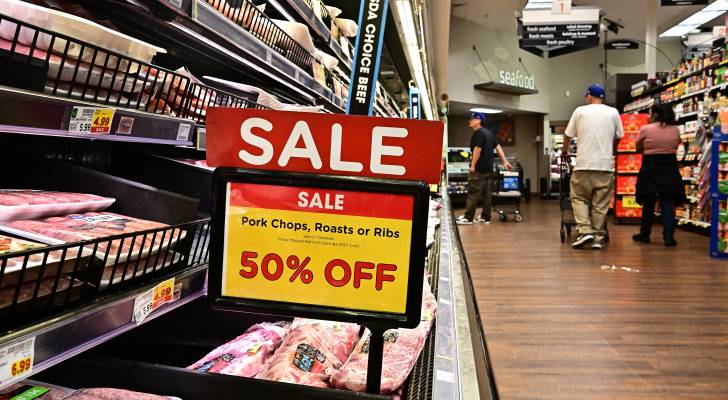“Drill baby drill!” proved a popular rallying cry for Donald Trump during the 2024 presidential election. But with a slowdown in both oil production and demand this year — a slump projected to extend into 2026 — a more accurate phrasing might be “Drill baby? Drill?”
The layoffs announced by ConocoPhillips, the nation’s third-largest oil producer, earlier this month underscore the wider issues facing oil producers in this country. The company announced restructuring that would reduce their workforce by 20% to 25% before the end of the year.
One report estimated that it could mean between 2,600 and 3,250 layoffs [1]. Here’s why the company and the oil industry are slipping, and what you can do if you get laid off.
Must Read
- Thanks to Jeff Bezos, you can now become a landlord for as little as $100 — and no, you don’t have to deal with tenants or fix freezers. Here’s how
- I’m 49 years old and have nothing saved for retirement — what should I do? Don’t panic. Here are 6 of the easiest ways you can catch up (and fast)
- Dave Ramsey warns nearly 50% of Americans are making 1 big Social Security mistake — here’s what it is and 3 simple steps to fix it ASAP
Why ConocoPhillips is underperforming
The company’s $1.97 billion second-quarter earnings fell short of the year-over-year comparison of almost $2.33 billion in earnings from 2024 [2], with CEO Ryan Lance blaming the prioritization of recent acquisitions like Concho Resources and Marathon Oil, as well as Permian Basin assets from Shell, over cost management [3].
Reuters added that, in a video town hall, Lance told staff, "We probably backslid a little bit in the cost effort … maybe we should have been smarter about how we did it.”
ConocoPhillips, however, isn’t the only major oil company experiencing layoffs. Boe Report noted that BP, Chevron, Halliburton and SLB have all cut staff as various external forces push “oil company earnings to their lowest since the COVID-19 pandemic” [4].
Why oil is slipping
Earlier this week, the U.S. Energy Information Administration released a short-term energy outlook [5] that warned of a significant decline in Brent crude oil production and prices — from $68 a barrel in August to around $50 per barrel early next year — through the beginning of 2026.
The report blamed large OPEC+ inventories and increased production, adding an expectation of prices hovering around $51 a barrel in early 2026. It also included a prediction that, next year, rising natural gas prices and falling oil prices will result in crude oil trading “at its lowest premium to natural gas since 2005.”
Inflation also dealt a blow to the oil industry, as has the president’s ongoing tariff wars. The New York Times noted that crude oil was trading at around $80 before Trump took office earlier this year, highlighting the “volatile” effect the trade wars have taken on oil prices. The Times also pointed to the increased Saudi-led OPEC+ production as a prime factor in falling oil prices [6].
And while many experts do believe that the industry will eventually recover by the end of next year, the Times quoted a former Diamondback Energy chief executive who anticipated the price drop and explained, “To use a driving analogy, we are taking our foot off the accelerator as we approach a red light.”
Meanwhile, Bryan Sheffield, the founder of Formentera Partners, a private equity energy firm, told Reuters earlier this year that “If oil does go into lower $60s (a barrel), or upper $50s, public independents that are already capital disciplined are going to have to cut their budget and cut rigs” [7] — a move that the Times added could cost jobs and deal a blow to local economies where the rigs are centered.
As of September 11, 2025, the Brent crude oil price per barrel stands at just below $67.
Read more: Robert Kiyosaki warns of a ‘Greater Depression’ coming to the US — with millions of Americans going poor. But he says these 2 ‘easy-money’ assets will bring in ‘great wealth’. How to get in now
What to do if you’re laid off
Losing your job is a jarring experience, and there are important steps to take to help ensure you get what you’re owed and stay financially secure while you find your next job.
Cover your bases before you leave
Confirming when you’ll receive your final paycheck and any severance or owed payments will help ensure you receive as much money on the way out the door as possible. To that end, NPR spoke to a career coach who advised negotiating the terms of your layoff before signing any paperwork, as you may be able to take home more than the company offers — or extend benefits like health coverage for a period of time [8]. As well, if you have a 401(k) with the company that laid you off, you’ll have to decide if you want to let them continue to invest it or if you want to bring it with you to invest elsewhere.
Get any professional documents in order
If possible, do your best to save important documents that illustrate how well you did your job, and ask for references from colleagues. In addition, some recommend asking for a layoff letter that outlines the reasons for letting you go. All these items can be used to either show future employers your skillset and experience, or illustrate that your layoff wasn’t due to your work performance.
Take some “you” time
The job search site Indeed suggests taking some time “to process the layoff and decompress” in a positive way, through engaging in non-career passions or simply spending time with loved ones. “Once you accept the layoff,” they add, “you may feel more mentally prepared to begin the job search again” [9].
Budget basics
Until you find another job, it’s vital that you budget what funds you have available now, those that may be incoming (final paychecks, severance, side hustles, etc.) and any savings or investments that you can dip into, to help you stay financially afloat during your unemployment. In addition, Manulife advises making a budget “that includes paying off high-interest debt such as credit cards, and reducing expenses to the bare minimum” while also halting big ticket purchases [10]. Of course, filing for unemployment benefits will also help you stay financially afloat until that next job comes along.
Update your resume and consider next steps
It’s crucial to ensure that your most recent experience, skillsets and any other relevant info are reflected on your resume ahead of your job search. And don’t forget to let people know that you’ve been laid off. You never know which of your friends or contacts knows of a job opening that might be right for you.
Getting laid off could also offer a chance to reevaluate career goals and direction. Manulife suggests considering new career avenues such as starting your own business, becoming a consultant or simply going back to school yourself to train for a new profession.
“Be opportunistic,” they add, “and think beyond your skill sets.”
ConocoPhillips’ sweeping layoffs highlight that even oil, long seen as one of the world’s most indispensable resources, isn’t immune to downturns. And while oil prices could stabilize in the coming years, the thousands of jobs being cut now underscore the risks of an industry built on volatility. For workers and communities tied to the oil patch, the question isn’t just whether drilling will rebound — it’s how to weather the downturn until it does.
What to read next
- How much cash do you plan to keep on hand after you retire? Here are 3 of the biggest reasons you’ll need a substantial stash of savings in retirement
- There’s still a 35% chance of a recession hitting the American economy this year — protect your retirement savings with these 5 essential money moves ASAP
- This tiny hot Costco item has skyrocketed 74% in price in under 2 years — but now the retail giant is restricting purchase. Here’s how to buy the coveted asset in bulk
- Want an extra $1,300,000 when you retire? Dave Ramsey says this 7-step plan ‘works every single time’ to kill debt, get rich in America — and that ‘anyone’ can do it
Join 200,000+ readers and get Moneywise’s best stories and exclusive interviews first — clear insights curated and delivered weekly. Subscribe now.
Article sources
At Moneywise, we consider it our responsibility to produce accurate and trustworthy content people can rely on to inform their financial decisions. We rely on vetted sources such as government data, financial records and expert interviews and highlight credible third-party reporting when appropriate.
We are committed to transparency and accountability, correcting errors openly and adhering to the best practices of the journalism industry. For more details, see our editorial ethics and guidelines.
[1]. Reuters. "Exclusive: ConocoPhillips says it will cut workforce by 20-25%, shares fall"
[2]. AP. "ConocoPhillips says it will lay off up to 25% of its workforce, impacting thousands of jobs"
[3]. Reuters. "’I fault myself for not paying more attention,’ Conoco CEO tells employees facing deep job cuts"
[4]. Boe Report. "ConocoPhillips’ deep layoffs highlight need for capital discipline, analysts say"
[5]. EIA. "Short-Term Energy Outlook"
[6]. [The New York Times]9https://www.nytimes.com/2025/05/30/business/energy-environment/oil-companies-production-prices-opec.html). "U.S. Oil Companies Are ‘Battening Down the Hatches’"
[7]. Reuters. "OPEC output hikes, trade wars have US oil producers wary of ‘drill baby drill’"
[8]. NPR. "Just got laid off? Get back on your feet with this step-by-step guide"
[9]. Indeed. "How To Handle Getting Laid Off at Work in 10 Steps"
[10]. ManuLife. "Eight actions to take when you’re laid off"
This article provides information only and should not be construed as advice. It is provided without warranty of any kind.

